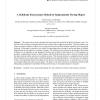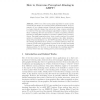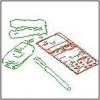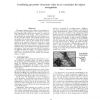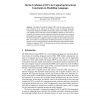119 search results - page 5 / 24 » Invariants for Non-Hierarchical Object Structures |
IJCV
1998
13 years 7 months ago
1998
The structure-from-motion problem has been extensively studied in the field of computer vision. Yet, the bulk of the existing work assumes that the scene contains only a single mo...
ISVC
2010
Springer
13 years 5 months ago
2010
Springer
SIFT is one of the most popular algorithms to extract points of interest from images. It is a scale+rotation invariant method. As a consequence, if one compares points of interest ...
ICPR
2006
IEEE
14 years 8 months ago
2006
IEEE
This paper presents a novel line-based affine invariant object location methodology. Our algorithm employs a new line-based transformation space decomposition technique to exploit...
CVPR
1996
IEEE
14 years 9 months ago
1996
IEEE
This paper addresses the problem of recognizing objects in large image databases. The method is based on local characteristics which are invariant to simzlarity transformations in...
BIRTHDAY
2009
Springer
13 years 8 months ago
2009
Springer
Abstract. The Object Constraint Language (OCL) can be used to capture strucnstraints in the context of the abstract syntax of modelling languages (metamodels) defined in the MOF me...
